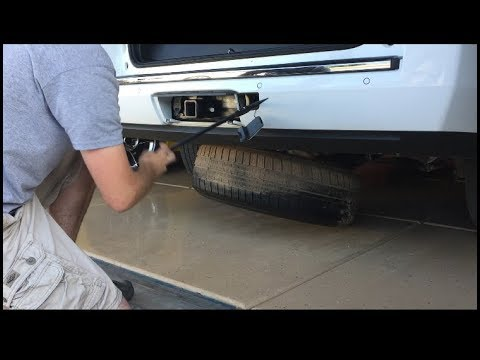JavaScript is disabled. For a better experience, please enable JavaScript in your browser before proceeding.
1 - 20 of 51 Posts
 0 ·
0 · 1 - 20 of 51 Posts
Join now to ask and comment!
Continue with Facebook
Continue with Google
or sign up with email
Top
JavaScript is disabled.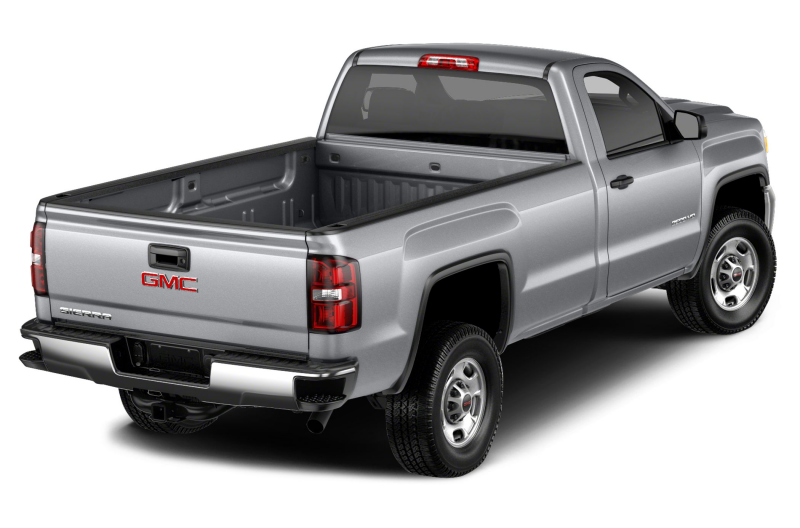 For a better experience, please enable JavaScript in your browser before proceeding.
For a better experience, please enable JavaScript in your browser before proceeding.
1 - 20 of 23 Posts
2009 Silverado LT 4WD
1 - 20 of 23 Posts
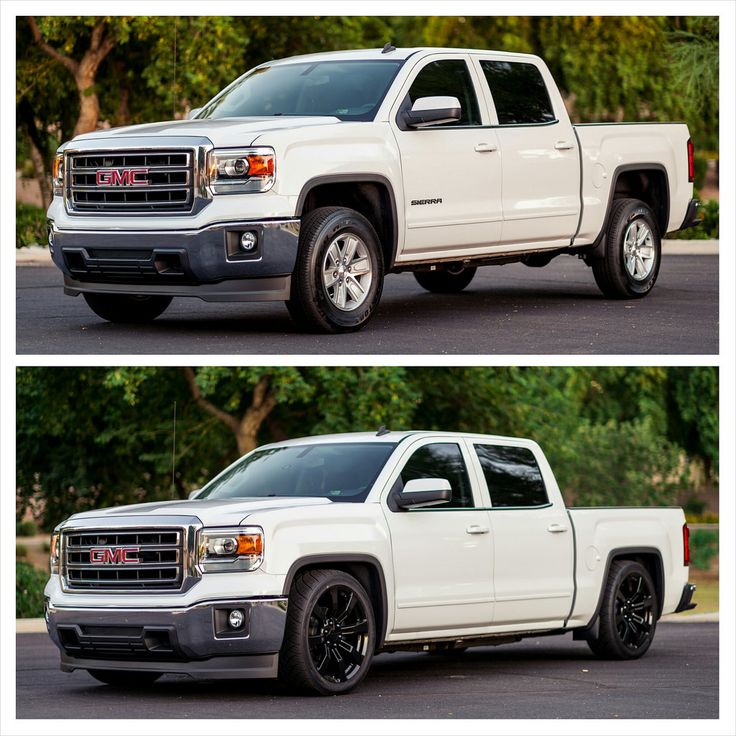 Please consider creating a new thread.
Please consider creating a new thread.Join now to ask and comment!
Continue with Facebook
Continue with Google
or sign up with email
Top
4. REPLACING A WHEEL
If any wheel is deformed, cracked, severely rusted or corroded, the wheel must be replaced. If the wheel nuts are constantly loosening, the wheel must be replaced along with the wheel studs and nuts. Some alloy wheels can be repaired with minor damage, but other wheels require replacement if damaged.
Use only new genuine GM parts. To purchase these parts, contact your dealer.
WARNING
The use of unsuitable or low-quality spare parts is dangerous. This may result in poor braking performance and handling of your vehicle. You could lose control of the vehicle, and you and others could be injured.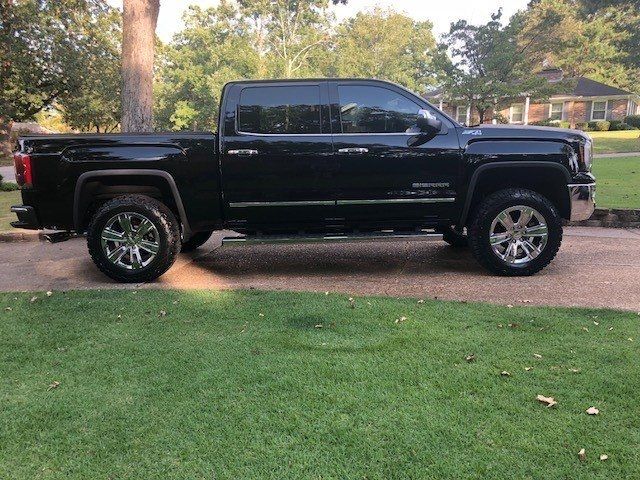
It is dangerous to install previously used wheels and tires on a vehicle. You may not know how long a given wheel or tire has been used or how many miles it has.
CAUTION
It is dangerous to be under a raised vehicle to perform maintenance or repairs without proper safety precautions and without sufficient qualifications. The jack supplied with your vehicle is intended solely for replacing a damaged tire and should only be used for that purpose. If you use the jack for any other purpose, the raised vehicle may slide off the jack, resulting in serious or even fatal injury.
To avoid further damage to the tire and wheel rim, drive at low speed to a level, level area to change the wheel. Turn on the hazard warning lights. Incorrect operation when changing a wheel can lead to injury. The vehicle could come off the jack and injure you or others.
To prevent the vehicle from rolling while changing a wheel, proceed as follows:
- Apply the parking brake fully.
- Move the automatic transmission selector to P (Park).
- If your vehicle has an all-wheel drive transmission, make sure the transfer case is in one of the gears for driving, not neutral. Otherwise, the vehicle may roll even if the automatic transmission selector is in the P (Park) position.
- Stop the engine.
- Do not start the engine while the vehicle is jacked up.
- Unload all passengers before jacking up the vehicle.
- Place wheel chocks front and rear under the wheel farthest from the damaged wheel. The necessary equipment is located in the luggage compartment behind the left side upholstery panel.
Press the release lever to open the upholstery panel.
1. Loosen the wing nut to remove the tool kit.
2. Remove the bag.
3. Remove the jack handle.
4. Remove the jack handle extension.
5. Remove the wheel key.
6. Remove the jack.
To release the jack from the lock, turn the knob on the jack counterclockwise to lower the jack head.
7. Loosen the wing nut to expose the wheel chocks.
The spare wheel is located under the bottom of the vehicle.
WARNING
To avoid injury or damage to the vehicle, do not remove or stow the spare wheel while the vehicle is jacked up. When reinstalling a spare or damaged wheel in its underbody storage location, be sure to fully tighten the fastener.
You may need to remove the vehicle's rear license plate to access the spare wheel lift shaft.
If your vehicle has a spare wheel lift lock, open the spare wheel lock cover located in the rear bumper and open the lock with the ignition key.
Connect the wheel wrench to the two jack handle extensions.
Insert the lift end of the extension (open end) into the hole in the bumper. Connect the extension to the hoist shaft.
Turn the wheel wrench counterclockwise to lower the spare wheel. Turn the wheel wrench until you can remove the spare wheel from under the vehicle.
Using the hook on the wheel wrench, pull the hoist cable towards you so that you can reach the spare wheel.
If the spare wheel does not lower to ground level, the secondary mounting must be released.
After the spare wheel is completely lowered, tilt the clamping bar attached to the end of the cable and remove it from the center hole of the wheel rim along with the cable. Remove the wheel from under the car.
If the wheel has a smooth trim cap, carefully remove it using the flat end of the wheelbrace as a lever.
If the wheels have decorative caps that are bolted on, remove the cap by completely loosening the wheel nut caps with a wheel wrench. The caps won't come off completely. Then carefully press the edge of the decorative cap until it separates from the wheel.
Loosen the wheel nuts with the wheel wrench. However, do not unscrew the nuts all the way.
If necessary, connect the jack handle extensions to the jack handle.
Position the jack under the jack provided closest to the damaged wheel.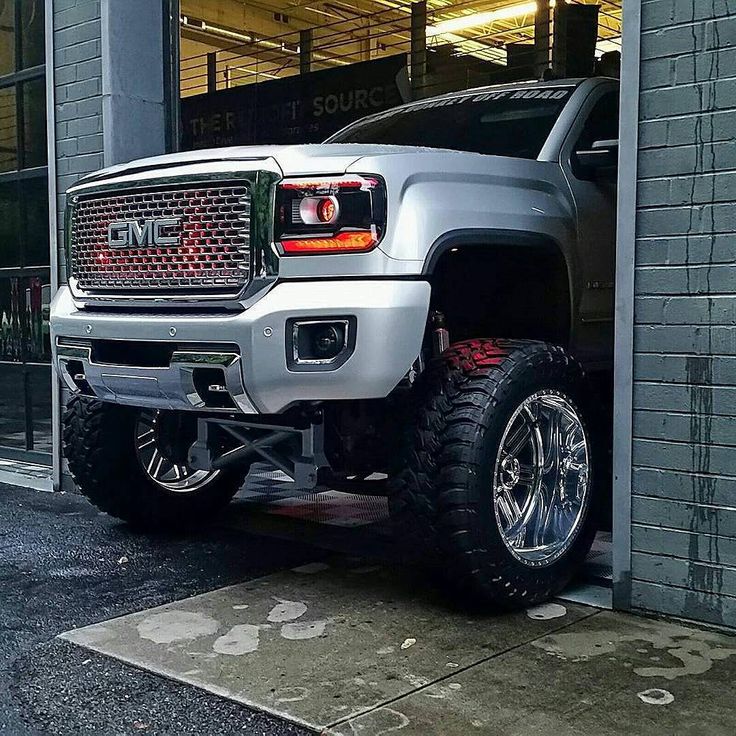
WARNING
Raising the vehicle with an incorrectly or insecurely installed jack can damage the vehicle, and even cause the vehicle to fall off the jack. To prevent injury to persons and damage to the vehicle, make sure the jack head is in place before lifting the vehicle.
If one of the rear wheels is damaged, you will need to attach both jack handle extensions. Attach the jack handle to the jack. If the front wheel is damaged, place a jack behind that wheel where the two sections of the frame side member overlap.
If the rear wheel is damaged, then the jack should be installed behind this wheel, under a special jacking platform located on the rear axle housing. Put the wheel wrench on the jack handle or on the extension and, turning it clockwise, raise the jack head until it rests on the platform.
Raise the jack until its head rests on its socket. Then jack up the vehicle to a height that allows the spare tire to be fitted.
CAUTION
It is dangerous to be under the vehicle when it is jacked up. If the vehicle slips off the jack, serious injury or even death could result. It is forbidden to stay under the car when it is supported only by a jack.
Loosen the wheel nuts and remove the damaged wheel. Remove dirt and rust from the wheel bolts and hub surfaces, as well as from the surface of the spare wheel adjacent to the hub.
WARNING
Dirt or rust on the wheel or on the parts to which it is attached can cause the wheel nuts to loosen. The wheel may come off and cause an accident. When replacing a wheel, it is necessary to remove dirt and rust from all surfaces to which it is attached. In an emergency, you can use a piece of cloth or paper towel to do this. Then, at the first opportunity, you need to finish the operation using a scraper or a wire brush to remove all dirt and rust.
WARNING
Do not lubricate the wheel studs or nuts with oil or grease. Otherwise, the nuts may come loose. The wheel may come off while driving, resulting in a serious accident. Using the wrong wheel nuts for your vehicle, or incorrectly tightening them, can cause the wheel to loosen and even lose the wheel while driving. This could lead to an accident. Make sure you are using the correct wheel nuts for your vehicle. If wheel nuts need to be replaced, make sure you are using the correct type of wheel nuts.
Otherwise, the nuts may come loose. The wheel may come off while driving, resulting in a serious accident. Using the wrong wheel nuts for your vehicle, or incorrectly tightening them, can cause the wheel to loosen and even lose the wheel while driving. This could lead to an accident. Make sure you are using the correct wheel nuts for your vehicle. If wheel nuts need to be replaced, make sure you are using the correct type of wheel nuts.
Slide the spare wheel onto the centering collar and studs.
Screw on the wheel nuts with their ribs facing towards the wheel and tighten them by hand until the wheel is pressed against the hub. Turn the wheel wrench counterclockwise to lower the vehicle.
Fully lower the jack. Tighten the nuts to the stop with a wheel wrench in the sequence shown in the figure.
WARNING
Using the wrong wheel nuts for your vehicle, or incorrectly tightening them, can cause the wheel to loosen and even lose the wheel while driving. This could lead to an accident. Make sure you are using the correct wheel nuts for your vehicle. If wheel nuts need to be replaced, make sure you are using the correct type of wheel nuts. At the first opportunity, stop and tighten the nuts with a torque wrench to the required torque.
This could lead to an accident. Make sure you are using the correct wheel nuts for your vehicle. If wheel nuts need to be replaced, make sure you are using the correct type of wheel nuts. At the first opportunity, stop and tighten the nuts with a torque wrench to the required torque.
Incorrectly tightened wheel nuts can cause braking pulsation and damage to the brake disc. To avoid costly brake repairs, tighten the wheel nuts evenly, in the correct sequence, and to the correct torque.
When refitting a full size wheel, the center cap (if provided) must also be reinstalled. Place the wheel cover on the wheel and gently push or tap it until it sits in place. The hood can only be installed in one position. Make sure that the lug of the cap matches the shoulder on the wheel.
When installing a wheel nut trim on a full size wheel, tighten the plastic nut caps first by hand and then with a wheel wrench.
Remove the damaged wheel and tool kit and put them back in reverse order. Make sure the tire air valve is facing away from the vehicle.
Make sure the tire air valve is facing away from the vehicle.
With the removed wheel lifted and pressed against the bottom of the vehicle, continue turning the wheel wrench until you hear two clicks, or until you feel the wrench turn twice. The mechanism of the underframe spare wheel holder is designed in such a way that the cable cannot be overstretched.
To be more secure, tug on the wheel to make sure it is properly secured.
WARNING
Storing and transporting an improperly secured jack, spare wheel, or other equipment in the vehicle can result in personal injury. In case of emergency braking, sudden maneuvers or an accident, the tools can injure passengers. Therefore, store such items in places specially designed for them.
Storing an alloy wheel with a damaged tire under the bottom of a vehicle for a long time can cause the wheel to lose its marketability. To prevent this from happening, always install the wheel with the air vent facing down. In addition, try to repair the tire and install the wheel on the car as soon as possible.
In addition, try to repair the tire and install the wheel on the car as soon as possible.
For the secondary mounting to work properly, the spare wheel must be stowed with the vent down. To release the secondary fastener, proceed as follows:
WARNING
Read all of the following instructions carefully before starting work. Failure to follow these instructions may result in breakage of the subframe holder and injury to you or others.
1. Look under the vehicle to see if the cable is visible.
2. If the cable is not visible, go to step 4. If the cable is visible, tension the cable by turning the wheel key clockwise until it clicks or turns twice. The cable tension mechanism is designed in such a way that it cannot be overstretched. Loosen the cable by turning the wheel wrench three or four turns counterclockwise. Tighten and loosen the cable at least two times.
After the spare wheel is completely lowered, tilt the clamping bar attached to the end of the cable and remove it from the center hole of the wheel rim along with the cable. Remove the wheel from under the car. If the wheel does not drop to the ground, continue this procedure.
Remove the wheel from under the car. If the wheel does not drop to the ground, continue this procedure.
3. Turn the wheel wrench counterclockwise until the cable is released by about 15 cm.
4. Install the wheel chocks on their smaller side so that they are facing each other with their main bearing surfaces.
5. Position the jack on the chocks, spreading them apart so that the jack base is securely seated on the chocks.
6. Attach the handle, extension and wheel wrench to the jack. Place a jack (with wheel chocks) under the bottom of the vehicle in front of the rear bumper. Center the jack so that its head is under the center of the spare wheel.
7. Turn the wheel wrench clockwise to raise the head of the jack until it touches the locking collar at the end of the spare wheel cable.
8. Continue to raise the jack until the spare wheel stops raising and rests on the bottom of the vehicle. The secondary mount should unlock. The spare wheel should now rest on the jack head.
9. Lower the jack by turning the wheel wrench counterclockwise. Continue lowering the jack until the spare wheel slips off the jack or hangs from the cable.
WARNING
If the spare wheel is not completely off the jack, make sure no one is standing behind you, to your right or left, before you remove the jack from under the spare wheel. If anyone stands too close during this procedure, they may be injured by the jack if they fall.
10. Disconnect the handle from the jack and carefully remove the jack. With one hand, rest against the spare wheel, and with the other hand, forcefully pull the jack from under the spare wheel.
11. If the spare wheel is hanging on a cable:
- Insert the jack handle with extension and wheel wrench into the end of the lift shaft through the hole in the bumper.
- Turn the wheel wrench counterclockwise to lower the spare wheel. Turn the wheel wrench until you can remove the spare wheel from under the vehicle.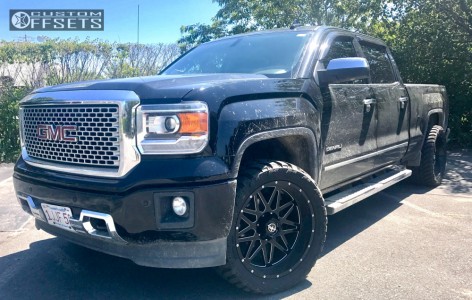
12. After the spare wheel is fully lowered, tilt the clamping bar attached to the end of the cable and remove it from the center hole of the wheel rim along with the cable. Remove the wheel from under the car.
13. If the cable hangs from under the vehicle, use the wheel wrench to turn the lift shaft in the bumper clockwise to wind the cable. Have your dealer check the subframe for the spare wheel as soon as possible. It is forbidden to transport a spare or replaced wheel on a frame holder until its mechanism has been repaired or replaced.
WARNING
To avoid damage to the vehicle, do not drive until the cable is properly installed.
In this article we will try to help you solve all the problems that you may encounter with the wheels of your car. And, basically, how to remove a car rim? If you want to change your flat wheel or tires, you will find all the information you need on this page. To do this, we will first see how to remove the tire from the car rim, and then, in the second step, how to remove the stuck rim of the car , then how to remove the flat rim from place to put the spare tire, and finally how to unlock the jammed rim nuts .
To do this, we will first see how to remove the tire from the car rim, and then, in the second step, how to remove the stuck rim of the car , then how to remove the flat rim from place to put the spare tire, and finally how to unlock the jammed rim nuts .
So we start our article by explaining how to change a car tire. You may have made a good deal by buying your tires online, but it's quite difficult to find mechanics who will agree to install tires bought elsewhere than at home on your car's rims. Therefore, the question of the desire to install them yourself is more than legitimate.
It is technically possible with a lot of force and a crowbar to change the tires of your car yourself, however, even if you manage to remove both sidewalls of the tire, loosen it and reinstall a new tire, you will not be able to balance the tire without a special machine, and without it your tires will wear out prematurely . Keep in mind that very often installation and balancing costs only about twenty euros. If you want to buy tires online at a discounted price, please note that many sellers offer free installation at a partner car center.
Keep in mind that very often installation and balancing costs only about twenty euros. If you want to buy tires online at a discounted price, please note that many sellers offer free installation at a partner car center.
Now we move on to the part that you are certainly most interested in, namely, how to remove the car rim stuck to the hub, or rather, a rather classic case of a rim that has not been removed for a long time and which, due to rust stuck to your wheel hub. Indeed, many motorists find themselves in this situation and do not know what to do. This can be especially frustrating if you have a flat tire and need to change the rim on your car. Here are the various solutions available to you:
 . After that, try removing the rim from your car again.
. After that, try removing the rim from your car again. Now we are going to explain to you the most classic procedure, but which no one knows about, how to remove the rim from its place if you have a punctured wheel and want to replace it with a spare tire? This procedure is simple, here are a few steps to follow:

Finally, it may happen that in order to remove the rim of your car, you have to deal with jammed nuts. In this case, you will have more or less the same solutions for the case of rim sticking to the wheel hub. The best solution would be to use Rust Protection Grease or Rust Protection Grease and let it run for several tens of minutes before loosening the nuts. Another possibility, try to find, there are some battery powered stun wrenches that create much more torque than your hand plus a socket wrench and will help you unlock the nuts.